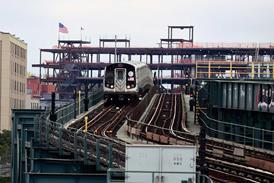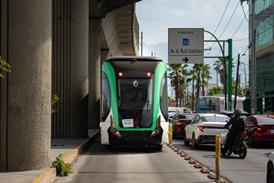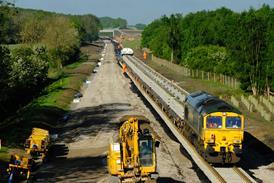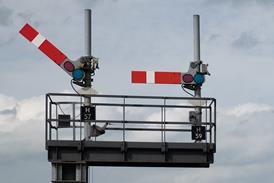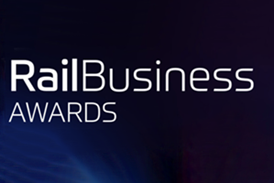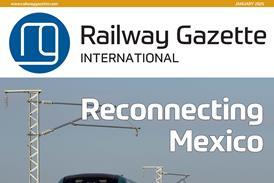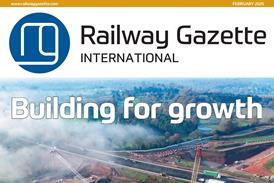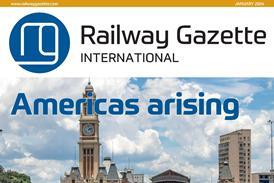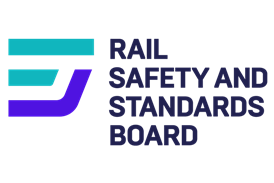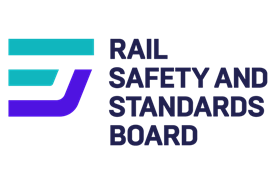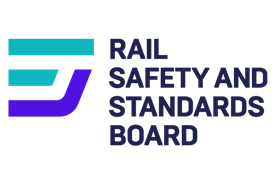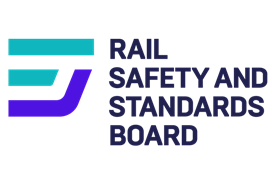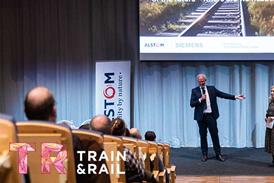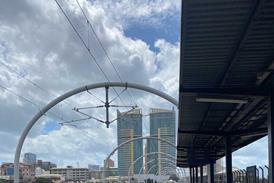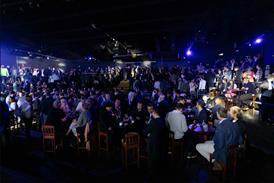INTRO: New Zealand’s Tranz Rail has lived through two difficult years, but Managing Director Michael Beard believes that a focused reorganisation can turn the business round. The degree of success may depend on changes in the government’s transport policy
DURING THE last two years Tranz Rail has withstood stock market uncertainty about its restructuring, its financial strength and its change of emphasis to concentrate on freight. We acknowledge that it has been a difficult time, but we believe we have taken the first steps towards a sustainable future. The pain was necessary to achieve the gain.
Towards the end of 2000, when I took over as Managing Director, there was an expectation within the New Zealand transport industry that the face of rail would change. No-one guessed by how much, and looking back, it is clear that the scope of structural and cultural change has been greater than expected.
Certainly the market expected some form of change, a common view being that the railway needed to focus much more on its customers. At that time the operation was diversified, with attention divided between different business activities. Apart from rail, Tranz Rail was involved in ferries, trucking, warehousing and distribution services, engineering operations and even telecommunications. Annual revenue was NZ$570m and there were 4000 staff.
Change had been taking place in the rail business for years. In 1982 New Zealand Rail was an unprofitable government department, with 21600 staff, 350 locomotives and 27000 wagons; the business maintained a network of 4450 route-km, on which it carried 11 million tonnes of freight a year. Privatisation in 1993, when the business was acquired by a consortium headed by a North American rail operator, was initially successful (RG 12.95 p853), but not enough was accomplished.
By the end of 2002, with major structural changes largely in place, Tranz Rail was profitable, publicly-listed and 80% owned by New Zealand investors. Staff had been reduced to 1200 and the fleet had been cut to 120 locomotives and 3300 wagons. During 2002 this fleet carried 14·5 million tonnes of freight representing 3760 million tonne-km on a 3898 route-km network.
Focus on freight
Our decision to focus on freight was not taken lightly. Behind the move lay a detailed analysis suggesting that the old model was fatally flawed.
When I assumed the leadership, Tranz Rail was labouring with poor customer perceptions, inconsistent service delivery, and a safety record well below world-class benchmarks. The traditional model was for rail to be everything to everybody, doing almost everything needed to run a passenger and freight business under one roof - and more. We were a jack of all trades and a master of none.
The widely-spread operational and structural base took its toll in capital investment, and the returns from certain parts of the business did not warrant the capital expenditure needed to sustain them. In other words, it would cost far too much to keep Tranz Rail on such a diversified base. We concluded that the crippling investment burden had to be relieved.
The goal we set was simple and succinct - to make Tranz Rail a world-class benchmark in customer satisfaction, efficiency of operation and safety. But this meant jettisoning the diversified base, and focusing firmly on freight performance.
To turn things round, we looked at what the market wanted, and what we were good at. The result was a vision for a market-driven freight specialist, able to deliver on the ’vital few’ requirements of reliable, timely and safe carriage, timely and accurate documentation and clean equipment that was fit for purpose. We will ensure that this happens thanks to a more focused structure that takes full advantage of our ability to be flexible and to exploit market opportunities.
Restructuring
This focused structure involved reorganising Tranz Rail around three complementary operating groups:
Rail Services focuses on commodity and wholesale customers, particularly coal, forestry, milk, third-party containers, unit trains and corridor access. Running unit trains means there is significantly less shunting, resulting in important cost savings.
Interislander Services concentrates on the Cook Strait link. Both fast catamaran and conventional ferry services are offered.
Distribution Services focuses on retail customers and provides value-added door-to-door multi-modal domestic and international distribution services, mainly by road. In the last few weeks, the Distribution Services Group has been offered for sale, further narrowing the focus on core linehaul operations.
The disposal process began last year when we sold the Tranz Scenic long-distance passenger business and the Auckland commuter services.
We have also insisted that the company adopts an intense focus on service excellence. This is essential so that a premium can be put on high quality products and services, and we will measure our success through customer satisfaction ratings.
Along with the structural repositioning went reorganisation of our core freight services. In the past, Tranz Rail had been more of a hunter-gatherer, going off to sidings and picking up wagons from different customers, building trains and hauling them to different yards around the country, where they were again broken up and reformed.
Wagonload services are expensive to operate, and we have now moved predominantly to a network of unit trains that run to fixed timetables and have guaranteed departure times. Extensive use of containers has given Tranz Rail the ability to offer much better customer deliveries. Around 90% of our services are now either single-commodity unit trains or intermodal trains moving directly between pairs of terminals.
We have also achieved a step-change in safety performance. We now work with a series of partners with excellent safety records, from whom we have gained valuable insights and who have given us benchmarks to match or exceed.
Outsourcing
Finally, we wanted to improve service reliability. Underpinning this objective was the outsourcing of locomotive and wagon maintenance.
In October 2000 we made what was then a revolutionary announcement. We were no longer going to be a vertically-integrated company, as that business model was no longer sustainable. When we first put this outsourcing concept to management, there was initially a period of denial - people naturally go through a defensive period, querying whether these new ideas were needed or acceptable.
Early in the process, we also put our proposals to the trade unions. We said ’we want to trust you, we want you to be part of the process, we need your input.’ The unions in effect became assessors and gave their ratings on key factors such as employment relations and the safety regimes applying at the different operators. This allowed them to see the benefits of change and this was a factor in their buying in to the new format.
We also had to convince the market that this was not another false start. In the past, Tranz Rail had tried to convince the market that it would outsource services, but this never really got off the ground. We had to prove that we were truly committed.
We were fortunate in that we were probably in the third generation of countries to move to outsourcing. This gave us a benchmark to measure our progress against what had already been achieved in countries such as the UK and the USA.
After 15 months of analysis and discussion, in December 2001 Tranz Rail signed off contracts with its chosen partners. For locomotive provision a seven-year, fixed-price, lump-sum contract was signed with Transfield, and for the infrastructure and track there is a three-year deal with Alstom that is clearly defined with key performance indicators.
Freight villages
As the newly-structured railway has begun to ’bite’ into the New Zealand transport landscape, our philosophy of intermodal integration has begun to reap dividends. We are aiming to establish smooth supply-chain links, principally at the interface between port, marine terminal, ship and rail, where there are major opportunities to ease congestion in land-starved ports by using rail as a remote marshaller of cargo.
Rail’s challenges are closely aligned to those of the ports. About 50% of our business involves moving containers to and from ports, and positioning containers for liner shipping services is a core part of our work. So far we have signed two ground-breaking agreements that should dramatically improve port operations by switching the sorting work to inland terminals.
The first and best example is Metroport, an inland supply hub in South Auckland, 200 km from the port of Tauranga. Our agreement provides for rail to feed ships sailing from Tauranga with export containers pre-sorted at the inland terminal; trains carry import containers in the reverse direction. This arrangement allows Tauranga to extend its Metroport service to a 24h, seven-day-a-week operation and offers new options to shipping companies.
Another example is at Port Chalmers, about 15 km from South Island’s second-largest city, Dunedin. Being surrounded by hills, Port Chalmers faces natural constraints and cannot easily expand. Tranz Rail and the Port of Otago company are now working to extend the port’s terminal gates to Dunedin. Rail shuttles using fixed sets of wagons dedicated to port company cargo will move traffic between the sea terminal and the inland railhead.
The port company will invest in the service, ensuring it can move its cargo as and when required. It will be able to position containers at the terminal exactly when dictated by ship departures, placing the boxes close to the cranes, and to shuttle import cargoes directly to the line-haul railhead.
Deals like this pave the way for better intermodal efficiency by developing freight villages outside city centres where there is room for container storage and stacking. We are confident that similar opportunities will arise in the future.
Climate for change
The degree to which efficiency gains are captured depends partly on the legislative framework for transport investment. Despite numerous reports, studies and investigations in recent years, transport policy has been slow to develop. But last year the government put forward several innovative measures that will change the way transport is administered, funded, and provided. The debate is hotting up, with the government seeking views on its proposals.
Some details were revealed in February 2002 when the Moving Forward package was published. This provided more funds for road transport, but it also emphasised a commitment to regional development, public transport, and road safety.
The key planks came in December, with the release of the New Zealand Transport Strategy and the Land Transport Management Bill.
The Strategy envisages an affordable, integrated, safe, responsive and sustainable transport system by 2010. It is based on four principles: sustainability, integration, safety and responsiveness. To be sustainable, transport policy will have to enhance economic, social, and environmental well-being.
The Strategy describes the negative social and environmental impacts of transport, and acknowledges that rail and coastal shipping can help to reduce these - ’wherever feasible, the government will encourage transport of products by rail’.
At the moment the government is studying the relative positions of road and rail in its Surface Transport Costs & Charges Study. While we are sure that there will be funding for transport other than roads, critical questions are what sources of funding will be found and how far transport takes responsibility for its wider costs. Given that rail usually imposes lower costs on third parties than its competitors, this is a key issue.
The Land Transport Management Bill is the first implementation instrument for the Strategy. Its coverage is wide, and unlike the legislation it replaces, it is not just confined to roads. All revenue collected is now land transport revenue, not just revenue for road transport. From these funds, payments can be made to any land transport project, public or private, though payments must still be made through a public body.
Funding for transport projects is channelled through Transfund, formed by the government in 1996, whilst management of the road network is the responsibility of Transit New Zealand. It is essential that both bodies take account of how each activity assists economic development, enhances safety and personal security, improves access and mobility, protects and promotes public health, and ensures environmental sustainability - even for a road. The bill also aims at a longer-term horizon for planning, with agencies such as Transit NZ required to prepare 10-year plans that are reviewed annually.
The proposals should also reduce many of the hidden costs that transport imposes on the economy. With greater transparency and better understanding of the true costs of one mode relative to another, the market will be able to make the right decisions.
Greater flexibility in new funding arrangements will enlarge the pool of worthwhile projects, with considerable positive impact on rail - we believe that new rail links are likely to be built. These in turn will stimulate traffic on existing lines, like logs and bulk milk, that would otherwise have travelled by road. And on many other lines, additional traffic will make use of currently under-utilised capacity.
To achieve this, rail’s environmental advantages will need to be recognised, while road transport safety will need to improve, including tighter controls on speeding, brake defects and driver fatigue. Regulatory control and investigation must be evened out between road and rail.
We predict that the measures the government may bring in to support its new policy need not be drastic to have a positive effect. They just need the market and officials to make the right decisions, taking account of the safety, environment, sustainability and other policy goals.
By the end of May, Tranz Rail expects to have presented to government a range of options that need to be considered, to create a more level playing field between road and rail. There is growing public demand to get large loads off the roads and onto rail, and increasing pressure for the government to support measures which will achieve this.
CAPTION: As part of its restructuring process, Tranz Rail has slimmed down its fleet of locomotives and rolling stock, and outsourced loco maintenance for seven years
CAPTION: The movement of containers to and from ports now accounts for almost 50% of Tranz Rail’s traffic. A rake of Maersk boxes waits to leave Timaru
CAPTION: These 24 ft open-sided containers have been developed for dairy and freight-forwarder traffic

